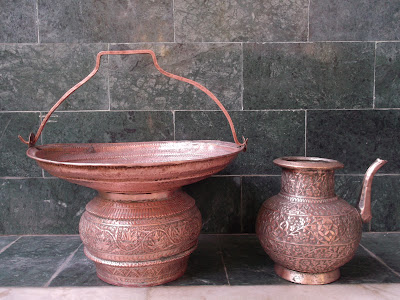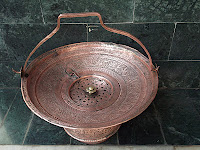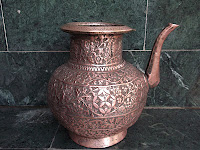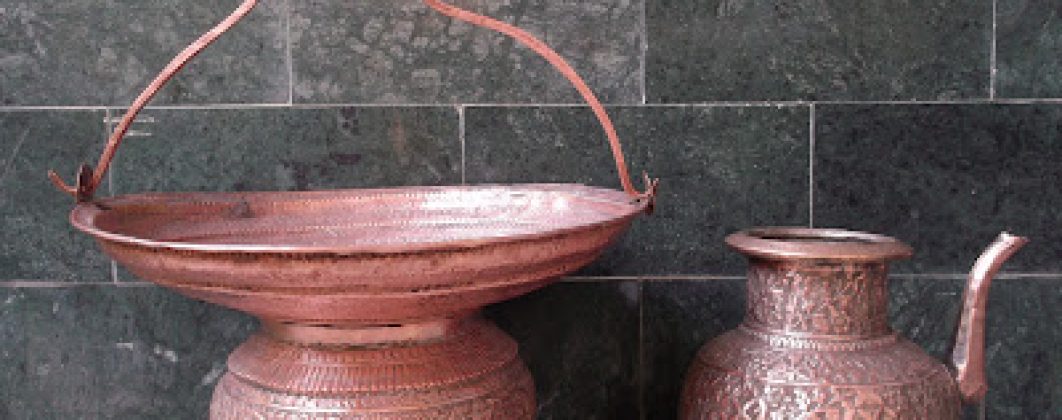 |
| Antique Mobile Wash Basin From YK’s Collection |
When you go to a good restaurant, you are usually provided with a napkin, and after completing the meal a finger bowl to wash your fingers. This is a courtesy and comfort they provide you and save you from going to the wash room to wash your fingers or hands.
As far as a fine dining restaurant is concerned, a finger bowl would suffice, as you have your entire cutlery (knife, fork, spoon etc.) to eat the food. So, the possibility of dirtying your hands is minimal. But imagine, you are at a typical Indian feast, where guests are seated on a cotton or woollen laden floor; in some traditional houses guests are seated on low level square wooden platforms. And in a typical traditional Indian feast, food is consumed with one’s own fingers and palms, and there shall be no use of cutlery. In this scenario, a finger bowl would definitely not suffice for washing your entire palm, and the hosts would not want to be discourteous by asking their guests to make use of a washroom (which may be located at a fair distance from the dining area).
 |
| Antique Basin |
|
|
 |
| Antique Pitcher with a Snout |
|
The hosts extend their hospitality by arranging a mobile wash basin thus, enabling the guests to wash off their hands in their very seats. While one bearer carries the mobile wash basin, another carries a metal container with water, followed by another who would provide with the napkin(s) for drying the hands. In houses where a dining table is used, the mobile wash basin is brought to the table carried by the servants along with a water jug. Table napkins are placed on the table so that guests can use them for drying their hands.


